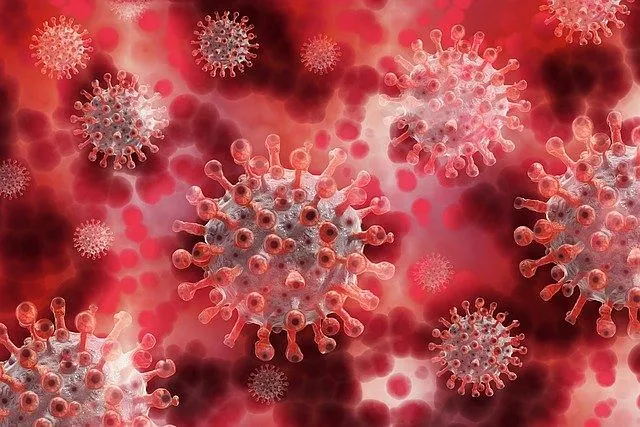Senior citizens are always more prone to infections especially those emanating from the respiratory tract. These include Influenza, Pneumonia and the much talked about COVID-19. We are all aware of the ravages of COVID in the years 2020 and 2021. Mercifully the year 2022 was kinder. Our population also was vaccinated very well with more than 90% having at least one dose of scientifically very well studied vaccines. Besides that, a large chunk of us got exposed to COVID infection often of the milder forms, thus achieving herd immunity. In fact, it appeared that finally the end of COVID was in sight.
Unfortunately, Covid is back in the news with a large number of cases being reported from China, USA, South Korea, Japan and Brazil in this month. While details are still coming in, this time a variant of Omicron BF.7 is being incriminated in these countries.
As per the data from India the January 2022 wave in India was driven by BA.1 and BA.2 sub-variants The sub-variants BA.4 and BA.5 which followed were more prevalent in European countries. BF.7 which is an offshoot of BA.5 was seen in very few instances in different states accounting for less than 2% cases till November 2022. Until very recently, a variant XBB has been the most common one.
The problem in China with seemingly high mortality as per the unofficial versions is multifactorial. Their policy of isolation (Zero COVID) and thus not exposed to the virus, elderly population not vaccinated in large numbers and the quality of vaccine of debatable efficacy according to many authorities.
Whether we are likely to witness an upsurge in the number of cases with this new variant, in the coming period is speculative. However, the problem of COVID is still existent in India, with more than 30,000 new cases being seen every day with 45 to 50 COVID related deaths every day. This cannot be ignored. The authorities have become vigilant to this new threat with strict check of passengers coming from COVID affected countries, advisory of RT PCR and genome sequencing for positive individuals and recommending use of facial masks and adopting general hygienic measures in public places etc.
The next 3 months are going to be crucial for us. Following the waves in European countries, China and Japan. India is expected to have wave 1 from 15 December to 15 January, wave 2 from mid-January to mid-February and 3rd wave from mid-February to end -March 2023 as per the international and Indian experts.
Preventive Measures:
Vaccination:
We must follow the local guidelines for getting vaccinated. Those who have had only one vaccination and more than one year has elapsed need to get the 2nd dose. The recommendation still is to have the same one, although there is some suggestion that getting a different one may be better or at least as effective. Those with already 2 doses or with a 3rd preventive dose need not rush for a booster. There is still no advisory for that.
Getting antibody titre done is not recommended.
General Measures:
`Keep a distance of at least 1 metre preferably 2 metres from other persons, even if they do not appear to be sick. Avoid crowds and close contacts. Wear a properly fitting mask if distancing is not possible. The mask should cover the nose, mouth and chin. After use keep it in a plastic cover or wash it if made of fibre. Never use masks with valves.
Hand hygiene by frequently washing hands with an alcohol-based hand rub or soap and water is important.
Using the elbow to cover nose and mouth while coughing or sneezing in order to prevent the spread of droplets.
Make Your Environment Safer:
Remember the risk of getting COVID is higher in crowded and inadequately ventilated places. Avoid closed, crowded or places involving close contacts (3 C’s). Meeting people outside homes is better and outdoor gatherings are safer.
Watch out for Symptoms:
The commonly reported symptoms are fever, dry cough, exhaustion and loss of sensations of taste and smell. Body aches, malaise, diarrhoea and rash can also accompany. Isolation and testing for diagnosing are important. These days commercially available testing kits are frequently used. If positive for COVID, A RT PCR and genome sequencing needs to be followed. This can be done at several ICMR approved laboratories. Since most infections in our population have only mild symptoms, isolation and simple measures like taking paracetamol, vitamins and nutritious food is enough. The isolation period in our country at present is 7 days instead of 10 as before. Any patient who complains of shortness of breath needs to be seen by a specialist at the earliest and may need hospitalisation if oxygen saturation is low and there is evidence of pneumonia.
Elderly populations who frequently have associated co-morbidities like diabetes, high blood pressure, previous heart related issues or those on steroids or immune-suppressant drugs need to be very careful and seek early medical attention. Even a mild infection can flare up into pneumonia or a serious event like a heart attack or a stroke in some instances.
Take Home Message:
Covid-19 has not gone away. We still have persons getting infected though in smaller numbers. The recent resurgence in several countries should caution us. Although there is no need to panic but attention should be given to our vaccination status. Resumption of Covid appropriate behaviour of maintaining distance, use of masks and general hygienic measures and keeping the environment clean and safe. Senior citizens in particular, especially those with comorbidities need special attention.
Prof Upendra Kaul, Founder Director Gauri Kaul Foundation, Recipient of Padma shri and DR B C Roy Award







